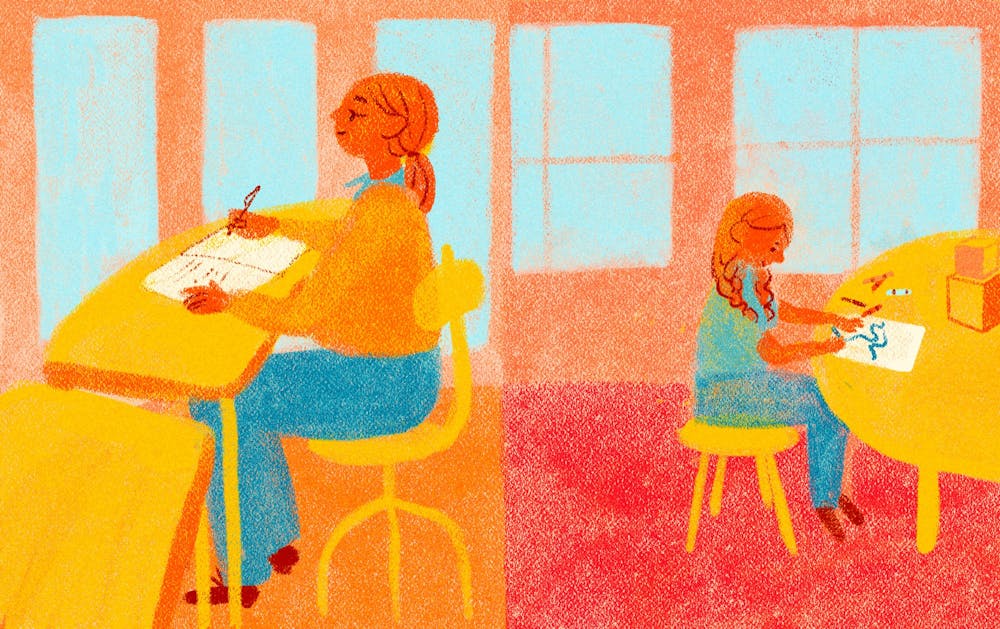For most students, zoning out during long classes means thinking about what they'll eat for lunch, who they'll study with later and what material will be on that important exam next week.
But some are juggling bigger responsibilities: their work schedule, what time they'll pick up their child to avoid rush hour traffic and what meal they're putting on the table for their family that evening.
According to the Institute for Women's Policy, "more than one in five college students — or 22% of all undergraduates — are parents."
Focusing in class is not the only burden that parents who are simultaneously students have to deal with. Paying for a college education and taking care of a child can be a heavy weight on the shoulders of students and their families.
In 2015, the Associated Students of ASU planned to address this financial burden by creating the Sun Devil Child Care Subsidy.
"The University, recognizing the diversity of the ASU community, worked with (Undergraduate Student Government and) Graduate and Professional Student Association to provide a viable solution," Maureen Duane, dean of students and family resources program coordinator, said in an email.
Even though the subsidy doesn't cover everything, receiving the money has allowed students like Amy Lindsey-Bennett to work, take classes during the day and get extra academic help outside of class.
"Before, I had classes on the weekend," Lindsey-Bennett, a junior studying psychology, said. She had to base her school schedule around work and picking her child up on time.
The subsidy allowed Lindsey-Bennett to achieve her highest GPA ever since transferring to ASU from Mesa Community College.
ASU was the last four-year college in Arizona to adopt such a program and has since tried to make changes to how it works, what the application process looks like and how much money gets allocated to the program each year.
Family Resources now oversees most of the program, seeing that children ages 0-12 are taken care of by a child care provider of the parent's choice with approval from the school.
"We allocate a portion of our budget toward the Child Care Subsidy which happens every summer," Leah Jones, president of GPSA and a graduate student studying sustainability, said.
Students apply for the program around the same time they get notified of federal student aid and when tuition is posted. Then, the Council of Presidents, made up of all USG and GPSA presidents, takes into consideration each applicant's financial need, number of enrolled credits and the age of the child.
"Almost all applicants receive the subsidy," Yasmin Alvarado, president of USG Downtown and senior studying public service and public policy, said.
This year, 119 student parents were awarded the subsidy, according to Duane.
"Right now I think we've been allocating around $65-70,000 a year," Jones said. Each student receives between $500 and $1,000 to put toward their child's daily care.
Jones acknowledged that the subsidy does not cover everything or make as big of a dent that the University could be contributing to a fund like the Child Care Subsidy.
"Even if someone doesn't qualify for (the Free Application for Federal Student Aid), there should at least be a grant to help low-income families who are studying and parenting," Lindsey-Bennett said.
The subsidy has not only helped Lindsey-Bennett in her academic pursuits but she sees changes in her son every day.
"He's just happy," Lindsey-Bennett said, explaining how her son is in a stable environment where he's reading and writing.
While the program is only about five years old, the current members of USG and GPSA are already looking to the future.
"I hope that the Council of Presidents in the next coming years are able to expand this program," Alvarado said. "There is room for improvement on our end in terms of marketing," referencing that it's hard to get a large number of applicants since the application first opens during summer break.
There's "absolutely" a lack of advertising, Lindsey-Bennett said, explaining how she wouldn't have found the subsidy if she wasn't so desperate for financial help.
"There should be something for (student) parents at orientation day," Lindsey-Bennett said. "Students should always be in the know about what we have in our community that helps each other."
USG and GPSA sees the holes in their marketing strategy and hopes to reach out to student parents in more ways than one during the next round of applications.
"What's been really cool about this program is how appreciative students have been," Jones said. "It is at least a dent in the expense and students have been really grateful for that."
Reach the reporter at pjhanse1@asu.edu and follow @piperjhansen on Twitter.
Like The State Press on Facebook and follow @statepress on Twitter.

Piper Hansen is the digital editor-in-chief at The State Press, overseeing all digital content. Joining SP in Spring 2020, she has covered student government, housing and COVID-19. She has previously written about state politics for The Arizona Republic and the Arizona Capitol Times and covers social justice for Cronkite News.




